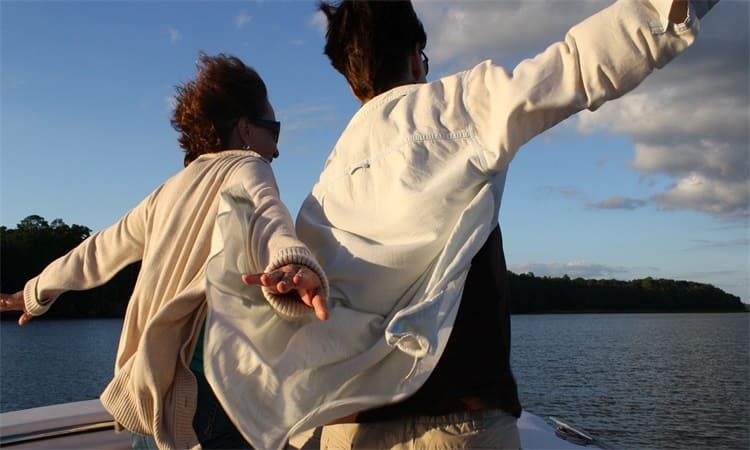Today, there is a story to tell about a special tree, the Lignum Vitae. It is also known as Guayacan, Guaiacum Tree, Ironwood, Palo Santo, or Bastard Greenheart, depending on its growing locality. The narrative has it that natives from Central America and the Caribbean refer to it as the “wood of life” or “tree of life,” hence its current name. So, let’s delve into the details of this incredible, rare species tree!
Lignum Vitae in Details
This tree belongs to the Guaiacum species; hence, some people scientifically refer to it as the Guaiacum tree. It is good to note that this is an exotic tree species restricted from trade across international borders. Below, we have listed the tree’s specifications. So, read through.
- Family: Zygophyllaceae, the caltrop family.
- Origin: Central America, Florida, and the West Indies.
- Other Common Names: Guaiacum Tree, Bastard Greenheart, Guayacan, Palo Santo, and Ironwood.
- Ecotype: Rockland hammocks.
- Soil Growth Type: Occasionally moist to extremely dry. Limerock and humus soils.
- Light Requirement: It can grown under full sun exposure or with partial shade.
- Dimensions: 20-30 ft tall with a 1-2 ft trunk diameter.
- Phenology: Long-life evergreen tree.
- Flower: Purple, mostly in spring but sometimes in warmer months.
- Fruit: Orange.
- Salt Tolerance: Moderate tolerance to salt spray. Can tolerate periodic inundation with salt water.
- Form of Landscape: Small tree, specimen planting.
- Wildlife Factor: It is a larval host plant for the Lyside Sulphur; native birds eat the seeds, and it attracts lots of pollinators.
Lignum Vitae Appearance
Undoubtedly, to attract the attention of passersby, plant a Lignum vitae hardwood tree in the front yard. This is not a tree to tuck away in the backyard; instead, prominently display it to catch everyone’s attention.
The heartwood’s distinctive dark greenish-brown to nearly black color is a distinguishing property that separates it from the slender, yellow sapwood. Its natural gum resin, which makes up around 30% of its weight, gives it an extremely greasy or waxy texture. It also has a dull sheen and a consistent, fine texture.
image source: Pinterest
Lignum Vitae Properties
Lignum vitae wood has several unique properties. When properly spiced, it dries slowly and with minimal deformation. Once dried, the wood becomes exceptionally sturdy. The stated average shrinkage values, from green to oven-dry, are 3.8% tangential and 2.5% radial. To work to the advantage of these properties, use caution to avoid severe splitting during timber conversion.
Lignum vitae wood is one of the heaviest-known woods for commercial use. It is incredibly heavy, with an air-dried weight of 88 pcf, equivalent to the average reported specific gravity of 1.05 (oven-dry weight/green volume). The Janka hardness equates to an incredible 4500 pounds of force.
Another key property of Lignum vitae wood is its enhanced insect damage resistance. But it has an exception: the longhorn wood borer beetles can attack it if left unseasoned. Once seasoned, though, it is exceptionally resistant to both insect and fungi attacks. When utilized according to stringent specifications, it has incredibly high strength qualities and does not require any preservative treatment.
Where to Plant a Guaiacum Tree
Before planting, give thoughtful consideration to the Lignum vitae because of its slower growth pattern and higher cost. In their first several years, some species will only grow up to an inch in length. The tree will flourish in well-drained soils that receive full light.
This specimen tree might not be appropriate for formal landscapes that call for a uniform and submissive tree because it needs to maintain flexibility in its intended appearance. Over time, the trunk may slant slightly instead of remaining perpendicular to the ground due to uneven branching. However, this gives it personality and encourages passersby to stare at it in wonder and curiosity.
Uses of Guaiacum Tree
Because of its self-lubricating qualities, Lignum Vitae’s unparalleled properties make it suitable for making ship propeller shaft bushings and bearings. It can endure operating pressures of up to 2,000 psi and typically lasts nearly three times longer than metal.
Besides its use in ships, it is frequently used as bearings in little devices like fans, air conditioners, and clocks due to its self-lubricating properties. In addition, its other applications include rollers, casters, mallets, tiny wheels, band saw blocks, and bowling ball manufacturing.

image source: Pinterest
Lignum vitae wood for sale found its way to Europe for medicinal purposes in the early 1500s, where its resin, to date, is a treatment for rheumatism, skin infections, and gout.
Conclusion
To conclude, there’s no denying the Green Guaiacum officinale has a storied purpose. Choosing trees and shrubs that can flourish without excessive water and fertilizer is important. The Lignum vitae, which favors high-alkaline soils, is one such species.
There is another, more sentimental motivation to look for plants outside their use. Exotic trees have histories and evoke a sense of place that makes you want to cherish, value, protect, and share their tales. By conserving Lignum vitae hardwood trees, their stories will keep evolving forever.








